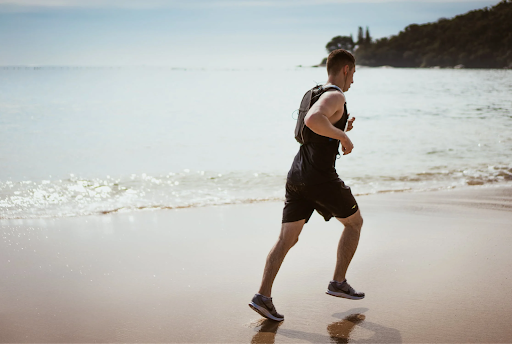Seven Benefits of Getting a Running Gait Analysis

Running is an excellent activity if you want to stay in shape. It is a low-impact activity that anybody may do almost anywhere and anytime. Running does not require much expensive equipment either. However, if you want to make sure that you are running in the most efficient way possible, it is recommended that you get a running gait analysis in Singapore.
A running gait analysis can help you improve your speed and efficiency and prevent running injuries. This article will discuss the benefits of an indoor running gait analysis and how it improves your running experience.
What Is Running Gait?
Running gait is how you move your body while running. It includes using arms and legs, landing on your feet, and balancing. Running can be challenging if you have a poor running form or do not know how to use the equipment properly. Hence, indoor running gait analysis can help you learn how to run correctly.
How Do You Analyse Your Running Gait?
There are two ways to analyze your running gait. The first uses a treadmill, and the second uses video analysis. Treadmill running gait analysis is the most common type of analysis. You will run on a treadmill while being filmed from different angles. This video will help your coach see how you move and identify areas that need improvement. Video analysis is another way to analyze your running form. You will film yourself running outdoors or on a treadmill, then review the footage with a coach to identify any areas that need improvement.
Components Examined During A Running Gait Analysis
Generally, it is essential to have a comprehensive analysis that looks at all parts of your body. During a running gait analysis, your coach will examine the following:
- Your posture
- The way you move your arms
- How you land on your feet
- Your foot strike pattern
- Your cadence (steps per minute)
- Your level of fatigue
Each component plays a role in how efficient you are as a runner and can impact your risk of injury. For example, if you have poor posture, you may be more likely to experience lower back pain. If you land on your heels instead of your toes, you may be more likely to develop shin splints.
Common Issues Detected During Running Gait Analysis
An analysis of a runner’s gait may detect one or more of the following issues that lead to poor running performance:
- Overstriding. Overstriding occurs when your feet land too far in front of your body, leading to running-related injuries such as hamstring strains, shin splints, and knee pain.
- Pronation: This happens when your feet roll inward when you run. It can cause Achilles tendonitis, plantar fasciitis, and knee pain.
- Supination: Supination occurs when your feet roll outward when you run. It can cause ankle sprains, shin splints, and IT band syndrome.
- Arm swing: Arms should swing forward and back relaxed. If your arms are swinging across your body, it can cause you to lose balance and slow down.
- Head position: Keep your head up and look straight ahead when running. Looking down at the ground can cause neck pain and breathing difficulty.
Runners can improve their running speed by fixing these issues and preventing injuries through running gait analysis.
Benefits of Running Gait Analysis for Runners
Indoor running gait analysis is becoming increasingly popular because it helps runners improve their running speed and performance. Likewise, coaches recommend that every runner should have a gait analysis. Here are seven reasons why runners need gait analysis.
- Enhances running economy. Running economy is the runner’s consumed energy when running at a given pace. If you are an efficient runner, you can run at a faster pace with less effort.
- Reduce the risk of injury. You can lessen the risk of running injuries by correcting running issues through running gait analysis. A gait analysis can help identify imbalances that may predispose you to injury.
- Prevent overuse injuries. Overuse injuries occur when runners place too much stress on a specific body part from repetitive motion, such as running. Runners often have this injury because of poor running form or insufficient cross-training to balance their sport’s impact on their bodies. By getting a running gait analysis, you can ensure you are not placing too much stress on any area of your body and help prevent overuse injuries.
- Increase speed and running performance. A gait analysis will be instrumental in improving your running speed and performance. Gait analysis can help you run faster while consuming less energy.
- Improve running efficiency. Running efficiency refers to how well you use the energy from your food to power your run. Improving your running efficiency can help you run further and faster with less effort. A gait analysis can help identify areas where you may be wasting energy to make changes to improve your efficiency.
- Help recover from injury. Proper form can help prevent further damage and help you heal more quickly. A running gait analysis can help determine if you are running with the proper form.
- Determine the best shoes for your feet. Different shoes offer different levels of support, cushioning, and stability. A gait analysis can help identify the type of shoe that is best for your foot type and running style.
Conclusion
Running gait analysis is a valuable tool for any runner, whether you are just starting or are a seasoned veteran. Indoor running gait analysis offers several benefits that can boost your running speed, economy, performance, and efficiency while reducing your risk of injury. If you want to improve your running, get a gait analysis today!






